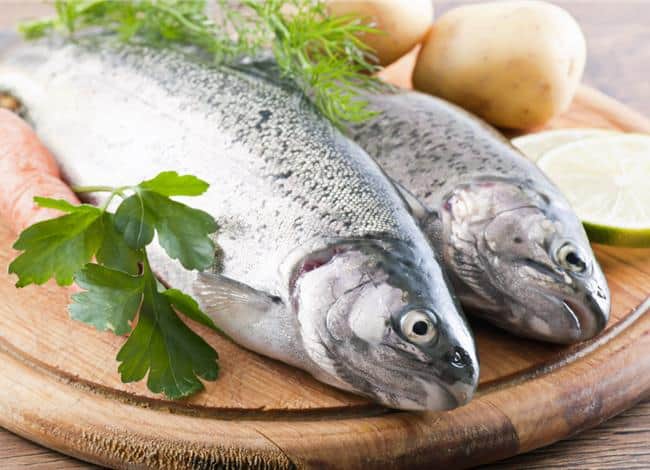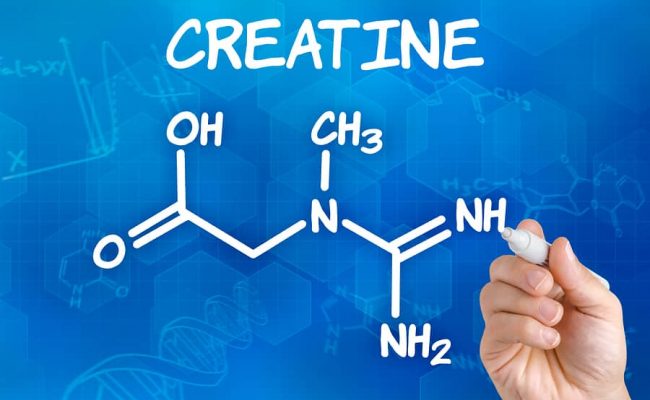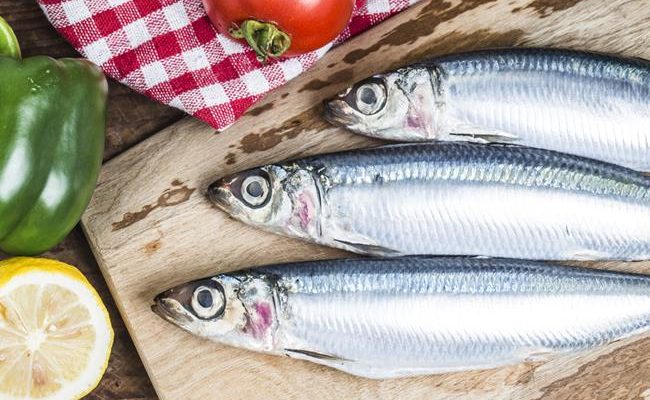
Fish and seafood is a source of protein, omega 3’s, minerals and vitamins. Most fish is considered low in fat and a source of heart healthy fats. Some research has shown health benefits for eating fish. The American Heart Association (AHA) recommends eating about 2 servings of fish per week in order to get the recommended level of omega 3’s in your diet. A serving size for fish is considered 3.5 ounces.
A concern with eating fish is the risk for contamination from mercury or polychlorinated biphenyls (PCB). Certain populations, like pregnant women and young children, are advised to limit their intake of certain fish.
It is recommended to eat a variety of food in your diet, and the same is true for fish. Fish can be part of a healthy diet, but it is recommended to eat a variety of protein sources.
See also: Best Fish to eat for Weight loss and Is it bad to eat tuna fish everyday?
What is a fish diet?
There is no single definition of a fish diet, but in general it means a diet that includes fish as a primary protein source. The Mediterranean diet is associated with many health benefits, and part of the Mediterranean diet includes eating fish.
Countries surrounding the Mediterranean region have access to fresh, local fish, and the Mediterranean diet also includes a high intake of fruits, vegetables, olive oil, legumes and a low intake of sugar and red meat.
Another variation of a fish diet is following a pescatarian diet. A pescatarian diet follows a vegetarian diet with no animal proteins except from fish and seafood.
Both the pescatarian and Mediterranean diets rely on fish as a source of protein.
Other cultures who depend on the sea as a food source can have a high intake of fish. However, most Americans have a low intake of fish compared to other societies.
According to Harvard Health (1), only one third of Americans eat seafood at least once a week.
Benefits of eating fish
Some research (2) has shown eating a diet high in omega 3’s can decrease risk for heart arrhythmias, lower triglycerides, help protect against cardiovascular disease and may help lower blood pressure.
Since fish is a source of omega 3’s, eating fish can be associated with these health benefits. Fish that are higher in omega 3’s include: salmon, mackerel, herring, lake trout, albacore tuna and sardines.
Fish is low in saturated fats and a good source of protein. Eating higher protein foods at meals could be beneficial for weight loss and maintaining muscle mass.
Fish can also be a source of potassium, selenium, zinc, iodine, vitamin E and vitamin A.
Concern of mercury and PCB’s
Mercury is released into the environment as pollution from industrial plants. The mercury goes into the water, and animals can absorb the mercury.
Larger fish, like shark, king mackerel and swordfish, are at risk for having more mercury contamination because they eat smaller fish.
Mercury is a neurotoxin meaning it can cause damage to the nervous system and disrupt development of the brain for young children and growing babies (3).
Its known high levels of mercury can be damaging to adults and especially children, but risks with lower levels of mercury or occasional intake is less known and controversial.
PCB’s are another contaminant that may cause negative health effects. According to Mayo Clinic (4), you can lower your risk for PCB contamination by eating a variety of fish. Limit intake of canned Pacific salmon to twice a week and fresh or frozen wild Pacific salmon twice a month.
Harvard Health (5) suggests concerns for mercury and PCB levels shouldn’t limit adult fish intake because the benefits of fish consumption outweigh these risks.
The important point is to eat a variety of fish. If you eat fresh caught fish, make sure you check local guidelines or health advisories for your specific area.
Pregnant women and young children should follow the guideline for eating fish provided by their doctor, as health experts can have varying views of fish intake.
In general, pregnant women may eat 2-3 meals per week from low level mercury seafood like sardines or shrimp (6).
Concern of over fishing
Another consideration for eating a fish diet is a concern for overfishing of certain fish species.
For example, blue fin tuna have been overfished and is now considered endangered by the International Union for Conservation of Nature Red List, according to a May 2016 NPR article (7).
To combat this issue, fish farms are on the rise. However, farmed fish has some controversies as well.
The bottom line is do your own research on particular fish you eat. Do your own research on where your fish comes from and any known potential harms. Fish can be part of a healthy diet, but you should eat a variety of fish if you choose to eat seafood.
Conclusion: What to consider when eating fish
Most health experts agree the benefits of eating fish outweigh the risks for most healthy adults. Most Americans don’t get the recommended amount of fish recommended by the AHA.
Certain diets, like Mediterranean diet and a vegetarian pescatarian diet rely more heavily on fish as a protein source. The Mediterranean diet is also associated with positive health benefits. However, these diets are also high in fruits, vegetables, whole grains, legumes and olive oil which can also be why they positively impact health.
If you want to increase your intake of fish, keep in mind to get a variety of seafood and mostly choose fish that are considered lower in mercury and PCB levels. Also, keep in mind concerns with over fishing or local health advisories as you make fish choices.
If you don’t want to eat fish, make sure you get omega 3’s and other nutrients fish provides in your diet from other foods.
Eating a variety of plant foods, and especially olive oil, nuts and seeds, can help you get the recommended omega 3 intake.
If you have questions about your individual health and if eating more fish would be a good choice, speak with your healthcare team.










